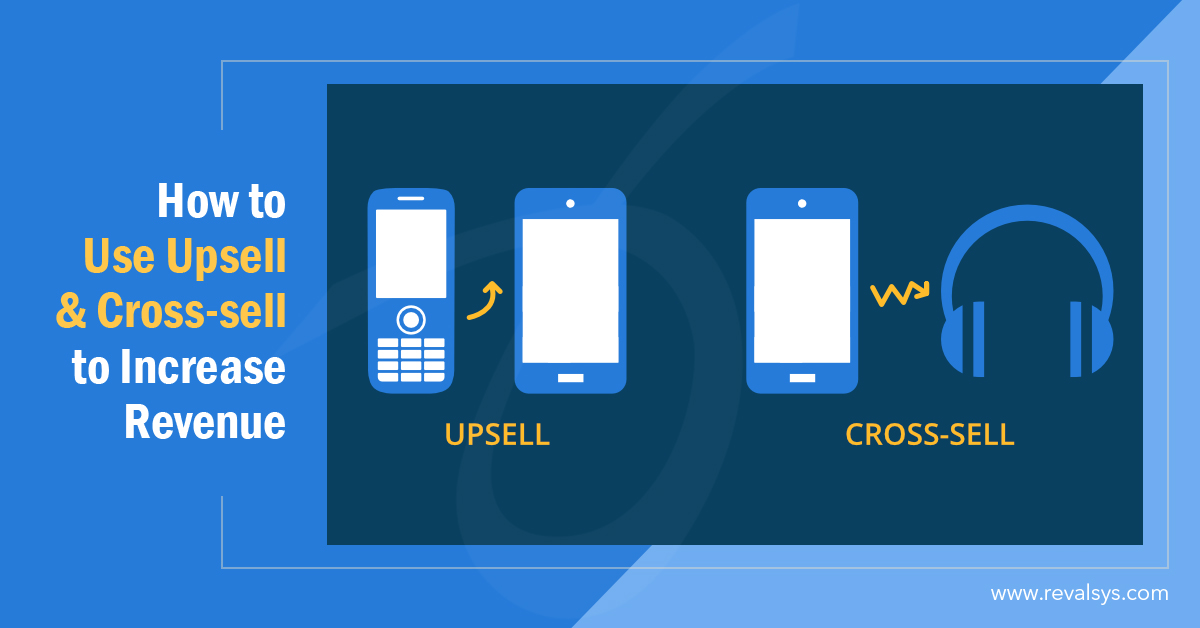
For all eCommerce business owners, the top marketing goal is to acquire more and more new customers. However acquiring new customers is not the only method to increase revenue. By increasing the average transaction value, you can provide a boost to your revenue.
Upselling and cross-selling, when used correctly can increase shopping cart value, make better conversion rate, revenue and overall user experience on your website. In order to increase order value and maximise profit, eCommerce businesses often use cross-selling and upselling.
What is upselling?
Upselling is a sales method that aims at inducing the customers to buy an upgraded, premium or more expensive version of the selected product or different add-ons with the sole purpose of making a more profitable sale.
What is cross-selling?
Cross-selling is also a sales method that aims at selling additional products or services relevant to the products or services the customer intends to purchase in order to increase the purchase value. For example, you can suggest a scanner when a printer is selected or purchased or socks when a customer purchases a pair of shoes.
Cross-selling Strategy
You need to plan properly to create an effective cross-selling strategy. The three main areas — segmentation, timing and relevancy should be paid more attention to while creating a cross-selling strategy.
• Segmentation
Based on information such as age, gender and location, you can segment your customers into different groups. In fact, it’s one of the best ways to gain useful insights into your customers. The combination of psychographic and demographic traits help you understand about your customers, what the customers want and where they are.
• Relevancy
Once you segment your customers into different groups, you need to create a strategy so that you can suggest products or services relevant to the customer type and purchases. When a customer is intending to buy a high-priced product and you offer a low-cost accessory, cross-selling works far better.
• Timing
It’s seen that most businesses cross-sell products at the time of checkout by suggesting items relevant to the products they are purchasing, displaying products that are frequently bought together or sharing items what other customers have bought. In the case of small-scale businesses, this doesn’t work well always. Inappropriate timing to cross-sell products can make your customers frustrated and have bad effects on your reputation.
Upselling Strategy
In comparison to cross-selling, upselling strategies need more finesse. So, it’s best to create an upselling strategy that has a personal approach. You can use the following upselling tactics to make better your sale amount.
• Before purchase
You can recommend products at the bottom of the category/product page or on the sidebar.
• During purchase
You can display product recommendations with the help of pop-ups, on the check-out page, in the shopping cart or in the emails to recover abandoned carts.
• After purchase
To entice the customers to come back to your for more purchases, you can make use of personalised follow-up emails.
When you have a good upsell, it should make the customers feel like they have won. Based on understanding the needs of the customers and making the purchasing the purchasing experience more enjoyable, you can have a successful upsell.
Tips for Upselling and Cross-selling
• Offer upsell and cross-sell that really make sense
• Be honest
• Demonstrate value
• Reward loyalty
• Use customer data to personalise offers
• Don’t be pushy
